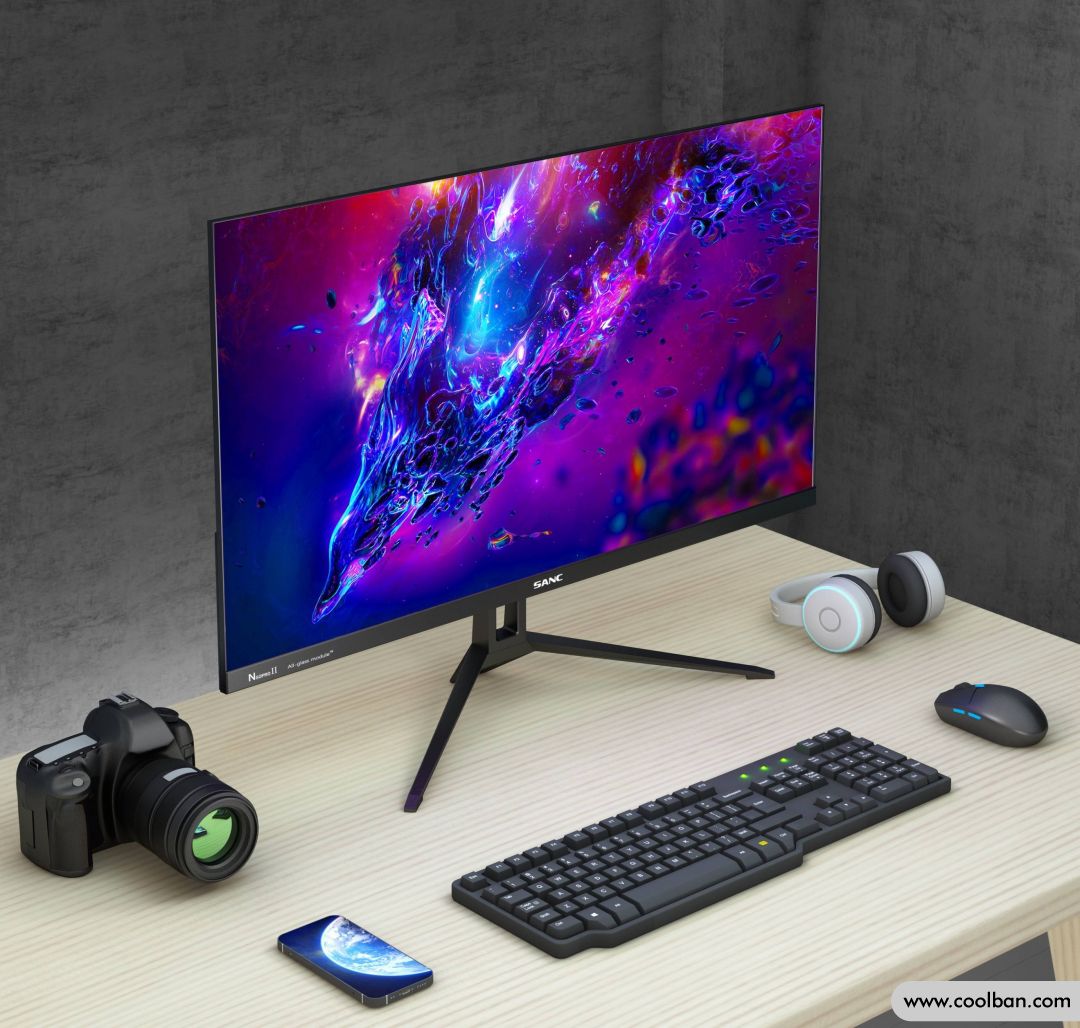Computer monitor parameter science
A large part of the computer experience comes from the display. Today, the editor will bring you some popular science of computer monitor parameters.
1. How to choose a gaming monitor panel?
The current mainstream panels include TN panels, VA panels, and IPS panels, and IPS panels are divided into ordinary IPS panels, Fast IPS panels, and Nano IPS panels.
The TN panel was once the first choice for e-sports players because of its extremely fast response speed and extremely high refresh rate, but the disadvantage is that the color and contrast performance is poor, which also greatly affects the gaming experience.
Fast IPS, Nano appeared later The IPS panel complements the shortcomings of the IPS panel. It not only has excellent color performance, but also excellent game parameters such as refresh rate and grayscale response time.
Because of its soft material, VA panels are often used in the production of curved screens and fish screens. IPS panels are usually the first choice for designers and retouchers due to their excellent color performance. The panel of the Apple Display is also an IPS panel.
Fast IPS panel, its response speed is four times faster than that of ordinary IPS panel, so it is very smooth to use and suitable for shooting games. Nano IPS panel, excellent color display effect, color gamut up to 98% DCI P3 Color gamut (135% sRGB), suitable for watching film and television action blockbusters, playing 3A game masterpieces, and shooting games. The first generation Nano The contrast ratio of the IPS panel will be worse, and the second generation has related optimizations.

2. What is the refresh rate?
Refresh rate refers to the speed at which the monitor scans line by line. What do we often hear about the refresh rate of 60Hz, 144Hz, and 240Hz?
60Hz means that the monitor can play 60 pictures per second;
144Hz means that the monitor can play 144 pictures per second.
In general, the higher the refresh rate, the better. It needs to be combined with the performance of the graphics card, usually 144Hz is sufficient. If your graphics card can only output 144 per second picture, but your monitor can play 240 pictures at the best performance, then at this time, your monitor has a bit of excess performance. As the refresh rate increases, the value of every penny we spend on it gradually decreases.
3. What is the response time, grayscale response time, and dynamic picture response time?
In general, response time is the time it takes for a pixel to change from one color to another. It is a gradual change from red to green.
Response Time: Early refers to the black and white response time, which refers to the time it takes to go from black to white and back to black.
Grayscale Response Time (GTG): Refers to the time it takes to switch between many grayscales or colors that form an image.
Dynamic Picture Response Time (MPRT): Reduces blurring by inserting black frames to create visual persistence.
Visual Response Enhancement (VRB): Sacrifices screen color and brightness to achieve faster response time.
ELMB , Dyac+, and IMBC are similar to MPRT, and they all insert black frames. After MPRT is turned on, the backlight will be turned off first, and the backlight will be turned on after the color level is adjusted, which will reduce smear. This just visually reduces smear, and doesn't change its grayscale response time. Repeatedly turning it on and off in this way will cause strobes, which will hurt your eyes. After turning on MPRT, the screen brightness will also decrease.
4. What is the frame rate?
A 60Hz monitor can play 60 pictures in one second, and 1 picture can be called 1 frame.
What is lock frame? What is the use of lock frame? Frame lock is to keep the number of frames output by the game at a certain number of frames. It is generally used to be compatible with monitors, so that the number of frames output by the graphics card can be output stably on the monitor to avoid screen tearing.
5. Color gamut : For ordinary gamers, the color gamut of 99% sRGB is very good, and it belongs to a wide color gamut display. The special effects colors of the game are more red and green, and the wide color gamut display has more cool game effects when playing games, so the experience is better.

The above are some common display parameters popular science.
